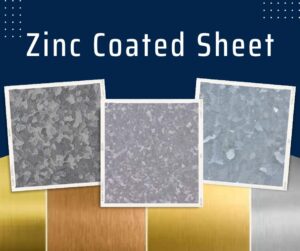Zinc
Zinc is a chemical element with the symbol Zn and atomic number 30. Here are some key facts about zinc:
-
- Zinc is a bluish-white, lustrous metal that is relatively soft and ductile.
- It is the 24th most abundant element in the Earth’s crust and is found in minerals such as sphalerite, smithsonite, and hemimorphite.
- Zinc is a fairly reactive metal and can form compounds with oxygen, sulfur, and other elements.
- It has a low melting point and boiling point and is a good conductor of electricity.
- Zinc has a variety of uses, including as a protective coating for steel and iron (galvanizing), in the production of brass and other alloys, in batteries, and in the production of chemicals such as zinc oxide and zinc sulfate.
- Zinc is an essential micronutrient for plants, animals, and humans, and is involved in many biological processes, such as enzyme activity and DNA synthesis.
- Zinc deficiency can lead to a range of health problems, including impaired growth and development, immune dysfunction, and skin and eye problems.
- Zinc is commonly used as a dietary supplement and is also found in many foods, such as meat, shellfish, legumes, nuts, and whole grains.
- Zinc is not considered to be a toxic element and is generally safe for human consumption in recommended amounts.
- The largest producers of zinc are China, Peru, Australia, the United States, and Canada.
uses of Zinc
Zinc is a versatile metal with a variety of uses. Here are some common uses of zinc:
- Galvanizing: Zinc is widely used as a protective coating for steel and iron, a process known as galvanizing. This helps to prevent corrosion and extends the life of these materials.
- Alloys: Zinc is used in the production of many alloys, such as brass (copper and zinc), nickel silver (copper, zinc, and nickel), and aluminum solder (zinc and aluminum).
- Batteries: Zinc is used in several types of batteries, including zinc-carbon batteries and zinc-air batteries.
- Chemicals: Zinc is used in the production of a variety of chemicals, including zinc oxide, which is used in the production of rubber, paint, and other products.
- Dietary supplement: Zinc is an essential micronutrient for humans and is often used as a dietary supplement to support immune function and other health benefits.
- Construction: Zinc is used in various building materials, such as roofing and gutters, due to its durability and resistance to corrosion.
- Automotive industry: Zinc is used in various components of cars and trucks, such as bearings, bushings, and fuel tanks.
- Electronics: Zinc is used in the production of electronic components, such as circuit boards and connectors.
- Cosmetics: Zinc oxide is often used in cosmetics, such as sunscreen and makeup, due to its ability to block ultraviolet radiation and its mildness on the skin.
- Fertilizers: Zinc is an essential nutrient for plants, and is often added to fertilizers to improve crop yields and soil health.

Comments are closed.